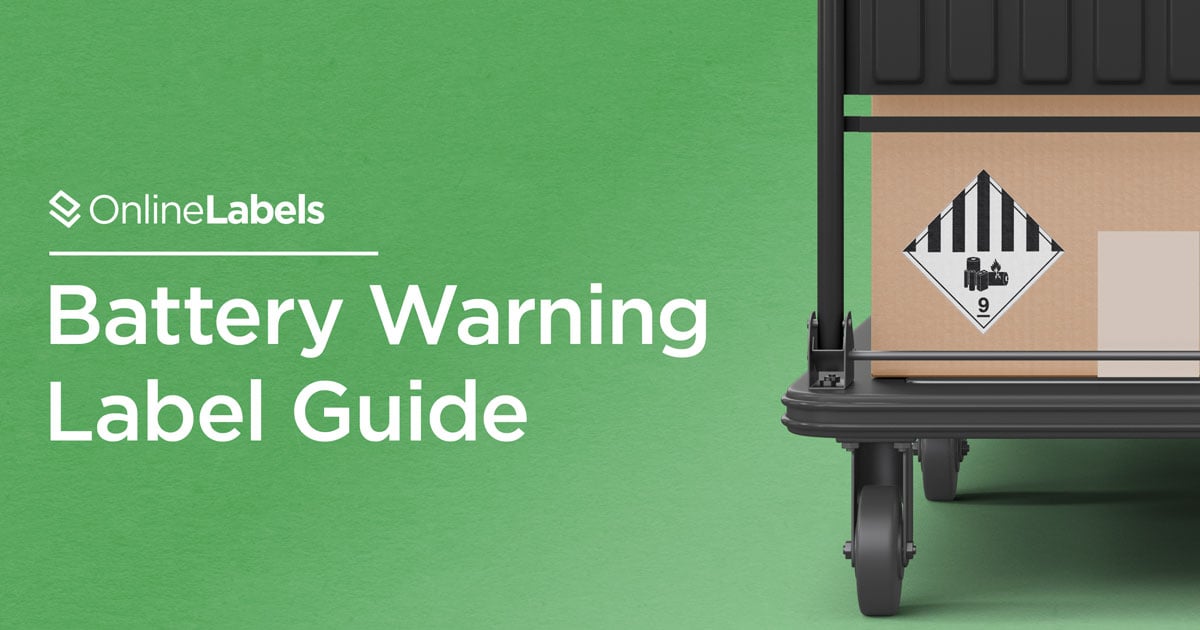Your Guide to Battery Warning Label Compliance

Battery warning labels are vital for the safe and compliant transport of batteries, especially those considered hazardous. This guide covers their significance, varieties, and legal mandates, which are crucial for anyone involved in battery shipping. Understanding (and correctly using) these labels are the key to ensuring safety and meeting industry regulations.
What are Battery Warning Labels?
Battery warning labels are adhesive indicators on battery packaging specifically designed to alert handlers and consumers about the potential risks associated with batteries. These labels contain hazard information and handling instructions, which are crucial for safe transport, especially for lithium batteries. They are designed to be highly visible and resilient, capable of withstanding any environmental conditions that might occur during transportation.
When are They Necessary?
Battery warning labels are mandatory when transporting batteries, including shipments of standalone batteries or devices containing them. They are required by transportation agencies like the International Air Transport Association (IATA) and the Department of Transportation (DOT).
A few examples of devices that require these labels could include, but are not limited to:
- Watches
- Calculators
- Cameras
- Car key tools
- Defibrillators and other medical equipment
- Temperature data loggers
- Mobile phones, laptops, tablets
- Power tools
- Electric toothbrushes
Types of Battery Warning Labels
The types of battery warning labels cater to different kinds of batteries and transportation scenarios. The most common types include:
Lithium battery labels: For lithium-ion and lithium-metal batteries, indicating specific hazards and handling precautions.
Cargo aircraft only labels: For batteries restricted to cargo planes.
Handling labels: With detailed handling instructions to prevent accidents.
Shipping Restrictions
Shipping batteries is more complex than shipping other goods. There are strict regulations and guidelines, particularly for lithium batteries, which include:
- Complying with packaging standards to prevent damage and short circuits.
- Adhering to quantity limits, especially on passenger aircraft.
- Providing mandatory documentation such as safety data sheets and transport documents.
- Understanding these restrictions is crucial for businesses to avoid legal penalties and ensure safe transportation.
Sourcing Battery Warning Labels
Businesses should source labels from companies specializing in hazardous material regulations. It's important to choose a supplier that provides labels compliant with the latest regulations and standards from the International Air Transport Association (IATA) and the Department of Transportation (DOT), to name a few.
With so many regulations and different agencies, take the pressure off of your business by using a reliable label supplier like OnlineLabels. You can ensure your shipments comply by using our stock battery labels on rolls. You’ll save time and money by ordering pre-printed battery labels for your business. They’re printed on durable film labels, so they’re sure to last.
Compliance is Key
Battery warning labels are critical for safe battery transportation, ensuring regulatory compliance and risk communication. Understanding the types of labels, when and why they are needed, and complying with shipping restrictions are key elements in responsible battery transportation.
Businesses that partner with a reliable supplier of compliant labels are a step toward seamless, safe, and responsible shipping. Remember, safety in transportation is not just about adhering to regulations; it's about protecting people, property, and the environment.



